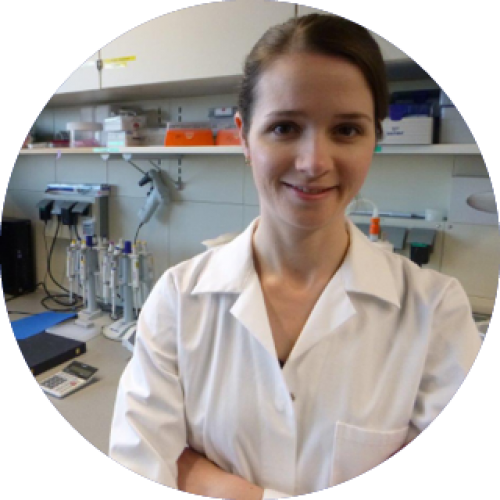
Prostate Cancer
 Queensland University of Technology
Queensland University of Technology
For Queenslander Dr Laura Bray, the words “cure for cancer” represent freedom: freedom for future generations to no longer worry about cancer. Freedom for health services to allocate resources elsewhere. Freedom for families to have longer lives together. Freedom for research funds to go to other fields.
Having seen its effects on close family and friends, Laura is deeply aware of the fear and worry the disease engenders in patients. Will I respond to treatment? Which treatment will be best? Will the cancer metastasise? If I’m in remission, will it come back?
“Seeing patients and their families cope with these unknowns inspires me,” says 27-year-old Laura. “If we can study cancer in different environments to discover which are prone to metastasis and relapse, and the mechanisms behind this process, we can help answer these questions.”
In pursuit of this aim Laura, who completed her PhD in 2012, spent three years working as a Research Fellow at the Leibniz Institute of Polymer Research in Dresden, Germany. This ended in March 2016 when she moved her research back to the Institute of Health and Biomedical Innovation at the Queensland University of Technology.
Her research focus is the exciting field of three-dimensional (3D) modelling which can detect how the “microenvironment” in cells signals and initiates the formation and spread of prostate cancer.
“Most lab research is performed using a 2D surface like plastic, which doesn’t replicate human biology,” Laura explains. “My work aims to create 3D prostate cancer models that can identify how it develops.”
Ultimately in her Can Too Foundation-funded work she seeks to develop:
- A sophisticated method of studying prostate cancer that allows researchers to identify new targets for drug treatments.
- A method of screening promising drugs more quickly to accelerate clinical trials and eliminate the need for expensive and inaccurate animal models.
- A system to test biopsies to find out if a patient’s prostate cancer is likely – or unlikely – to develop into an advanced or metastatic form.
She and her colleagues have already made progress. “We recently developed and published our 3D culture models of breast and prostate cancer,” she says, “and when we applied clinically relevant chemotherapy drugs to our cultures, they displayed comparable tumour regression to that in models.”
Laura’s Can Too Foundation funding is her first project grant and the highlight of her career so far, she says. It’s given her an opportunity to foster the collaborations she’s had in Australia and Germany to continue performing high-impact research for prostate cancer patients.
Her research has always been driven by application, keeping the impact on patients in mind. She is pleased that Can Too Foundation shares this view, seeking to fund young researchers who want to effect real change on behalf of patients.
She’s grateful, too, because it’s notoriously hard for researchers like herself to get funding, and it’s disheartening to work hard to prepare grant proposals and receive many rejections, she observes.
Laura, who grew up on the Sunshine Coast, is a recipient of the inaugural Prime Minister’s Queen Elizabeth II Diamond Jubilee Postdoctoral Award, in 2012, and has also been awarded a National Breast Cancer Foundation Postdoctoral Fellowship. She and her husband Ross Bray enjoy reading, learning languages, keeping fit and travelling.
Above all it’s her research and the need to support cancer patients that motivates her. “They’re in my thoughts. As a researcher I’m here to support them, and they’re my real source of inspiration.












